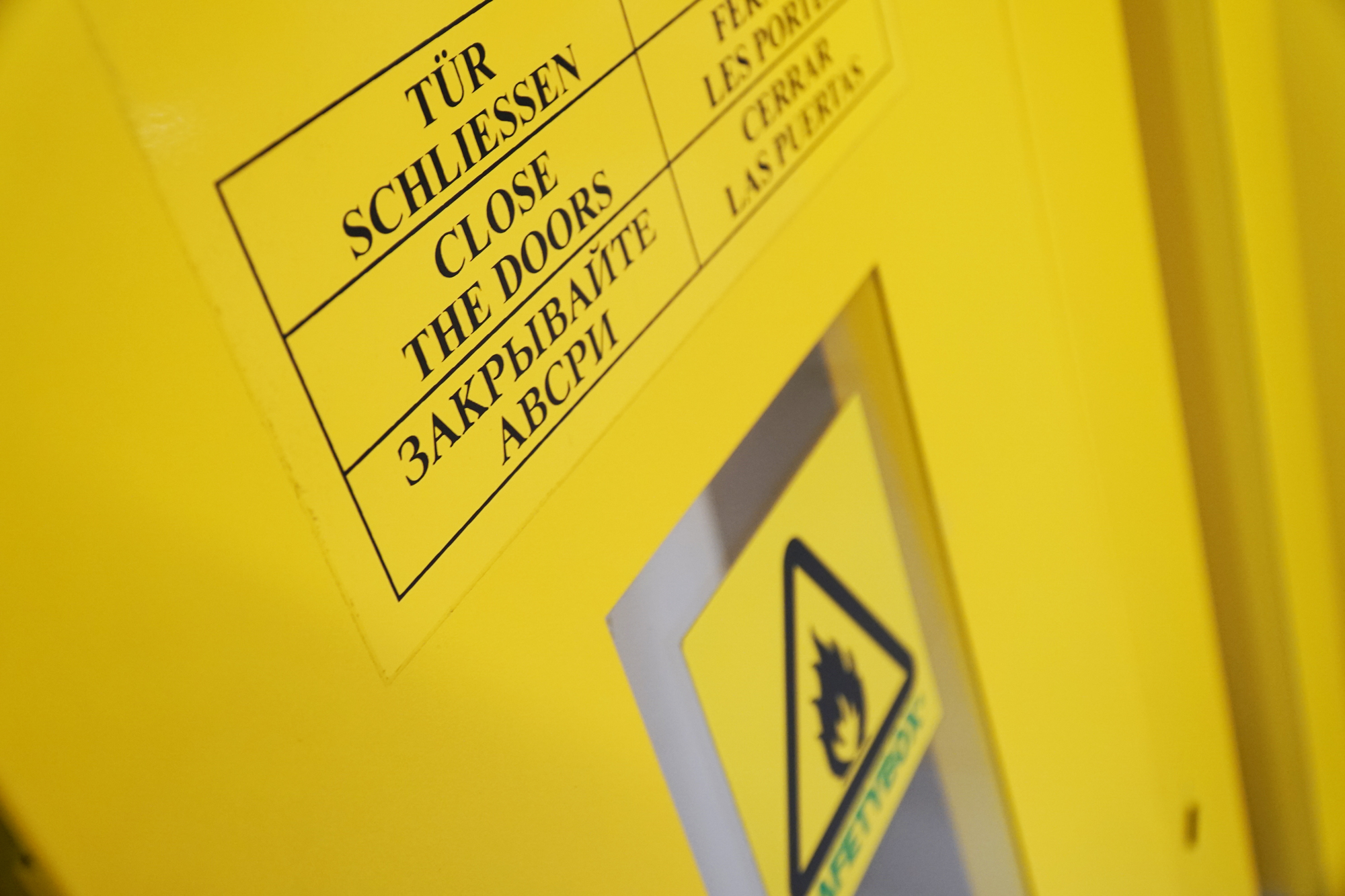Is it possible to decant my chemicals in a flammable liquid storage cabinet?
This is one of the questions that we frequently receive from our customers, and our answer is always the same: it depends.
Here are some considerations to be made if you are thinking of having your chemicals decanted in the cabinet.
- Whenever the cabinet doors are open, chemicals are vulnerable to heat sources and combustion such as flames, sparks, temperature, static electricity, electric shock, etc. When the doors are closed, however, our Safetybox® cabinets for flammable liquids are designed to fully contain liquid chemicals (as well as their vapors) and offer fire resistance from 30 to 90 minutes.
-
The laboratory manager is obliged to keep all chemical vapors and fumes within certain exposure limits. When decanting chemicals in the cabinet, you must therefore take in consideration:
- Health hazards arising from the inhalation of chemicals.
- Maximum storage capacity of the flammable liquid cabinet.
- Proximity to first aid equipment, safety showers and eye washers.
- Any (recommended) ventilation and / or aeration systems. -
Spillage is one of the biggest risks associated with chemical storage. Leaking flammable liquids can create an immediate fire, explosion, exposure and environmental hazard. This is why our devices include an automatic closure of the safety cabinet doors if the internal temperature exceeds a certain threshold, thanks to an exclusive mechanical system.
However, remember that the risk of spillage does not only exist during decanting, portable containers can be overturned or dropped, but they can also leak! -
Flammable liquids should be kept 3-5 meters away from other incompatible substances such as corrosives, toxic chemicals, oxidants, some compressed gases and organic peroxides. If used correctly, the safety cabinets greatly reduce the extent of these distances as the vapors, and fumes find an effective separation barrier.

